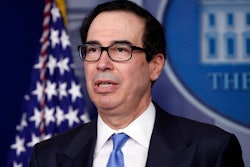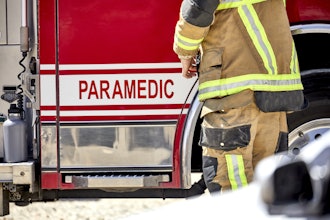
WASHINGTON (AP) — The U.S. economy shrank at a 5.0% rate in the first quarter with a much worse decline expected in the current three-month economic period, which will show what happened when the pandemic began spread across the U.S.
The Commerce Department reported Thursday that the decline in the gross domestic product, the total output of goods and services, in the January-March quarter was unchanged from the estimate made a month ago.
The 5% drop was the sharpest quarterly decline since an 8.4% fall in the fourth quarter of 2008 during the depths of the worst financial crisis since the Great Depression.
The first quarter period captured just two weeks of the shutdowns that began in many parts of the country in mid-March.
Economists believe that GDP plunged around 30% from April through the end of this month.
That would be the biggest quarterly decline on record, three times bigger than the current record-holder, a 10% drop in the first quarter of 1958.
Forecasters believe the economy will rebound in the second half of the year. The Congressional Budget Office is predicting a 21.5% growth rate in the upcoming July-September quarter followed by a 10.4% gain in the fourth quarter.
However, a handful of states, particularly in the South, have begun to report surging infections. And even with a rebound in growth if it does materialize in July, it would come after seismic losses that would mean a decline in economic output for the entire year.
While the overall GDP figure was unchanged for the first quarter, the composition shifted slightly with downward revisions to consumer spending, exports and business inventories offset by an upward revision to business investment.
The Thursday report was the government's third and final look at first quarter GDP.
The panel of economists who have the job of declaring U.S. recessions announced on June 8 that the country had entered a downturn in February, ending the longest economic expansion in U.S. history, 128 months of uninterrupted growth that had begun in June 2009 following the downturn triggered by the 2008 financial crisis.
President Donald Trump, who has to face voters in November, has declared that the economy will come roaring back with a V-shaped recovery starting this summer.
Economists are no where near that optimistic. They are worried about the devastating impact a second serious wave of the coronavirus could have if it forced widespread shutdowns again.
“The foundation to this recovery is an improving health outlook,” said Lydia Boussour, senior U.S. economist at Oxford Economics. “Amid rapidly rising infections across many states, risks to the outlook are dangerously tilted to the downside.”
Financial markets took a sharp nosedive Wednesday, reflecting new worries about reports of rising coronavirus cases in many states.
“I can’t remember the economy facing this much uncertainty,” said Sung Won Sohn, a business and economics professor at Loyola Marymount University in Los Angeles. He said that until a vaccine is found and widely available, the high uncertainty can be expected to last.
Mark Zandi, chief economist at Moody’s Analytics, said for the country to avoid a double-dip recession, an effective vaccine needs to be available next year and new waves of coronavirus cases will need to do less damage than the first wave. Congress needs to soon pass another package of at least $1 trillion in further support for laid-off workers and struggling businesses, Zandi said.
“If any of these three things don’t happen, then the outlook is much darker,” Zandi said. “I think we are in a recovery mode right now but the economy is very fragile.”






















